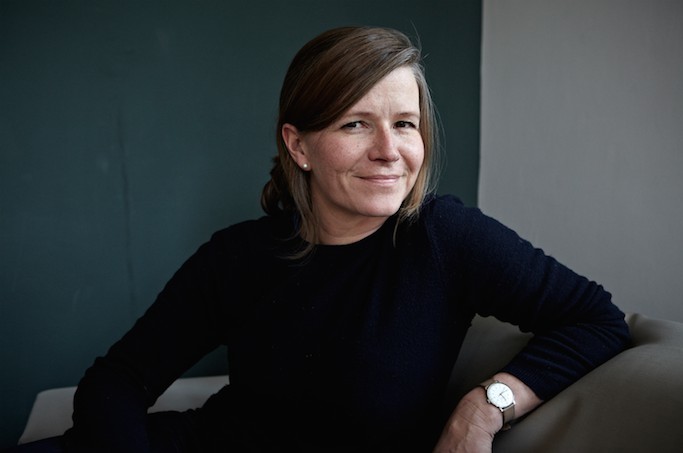Nearly every year, the Salone breaks its own record in terms of numbers. More than 370,000 visitors and exhibitors from 160 countries joined this edition of Milan’s inter- national furniture fair, with its slogan ‘Come to the 55th year of wow in design’. In addition to the fair itself, there were 450 events in the Fuorisalone programme – from exhibition openings with refined installations to expert talks and cocktail parties in celebration of various occasions. And, after a break of 21 years, the Triennale tradition is back on track as well, with 27 exhibitions under the motto Design After Design, not to forget the additional pavilions that decorate the city (continuing until September). All in all, it was a full event. But what about the design aspect? To locate the highlights in Milan is becoming ever more difficult with each edition – to determine what to see and what to skip is a major feat for design aficionados and all who are looking for the best ideas – those that woo beyond of the wow-effect.
A favourite discovery was the Neo Prehistory expo at the Palazzo della Triennale in Parco Sempione. Curated by Kenya Hara and Andrea Branzi, the exhibition makes a journey through the centuries – from the instruments of the Stone Age to the nano-technologies of the present day. Each of the 100 objects showcased was inspired by a different verb, previously assigned by the curators. The overview resulting from this method of matching tools and desires is astonishing. Displayed are such things as hand axes, the Hiroshima atomic bomb, and Amazon pack- ages. Furniture does not have a role in this tour d’horizon. But there was plenty of that at other locations, and in the fairground of course, where Eurocucina and Salone del Bagno were also taking place. Thus the wow- effect that was announced was obviously related to details and refinements.

The on-going trend of re-editions and historical retro looks was omnipresent and again declined by many companies and designers. With Bertjan Pot’s new colourful upholstery for the 1930s Utrecht Chair by Gerrit Rietveld, Cassina remained true to its approach of focusing on classic icons. Curved lines reminiscent of the 1950s characterise much of the new furniture being shown, even by designers you would not expect it of – be it Naoto Fukasawa’s Ten armchair for Driade or the Santiago collection of upholstered furniture by Claesson Koivisto Rune for Tacchini. Gentle pastel colours that hark back to the 1950s were created for the new sample boards – as per some of the duotone colours Lievore Altherr Molina chose for their Arper’s Catifa family of chairs. Colour in general was the focus of many companies and design- ers. With Hella Jongerius as art director, the Vitra colour range was showcased this year at CasaVitra in the Brera district. ‘Colour your life’ could have been a good slogan for this year’s motley Salone.
Some of the discoveries will stay in mind longer. Alberto and Francesco Meda’s Aledin table lamp for Kartell is one of those – with a delicate construction made out of thin, transparent plastic, it has the potential to feature on many a desk. Jasper Morrison’s T chair for Japanese label Maruni was definitively one of the most convincing seats when it comes to reduced forms and materials – wood combined with a steel strap. Magis celebrated its 40th anniversary with two remarkably bulky and audacious projects: a cast-iron table collection called Brut by Konstantin Grcic, and stools and tables by Jerszy Seymour with the incomparably complicated and humorous names of: Bureau for the Study of Vivid Blue Every-Colour Inhabitations of the Planet, the Transformation of Reality, and a Multitude of Happy Endings. With Flemish architect Vincent van Duysen as art director, Molteni chose a very clear and minimal route for its new pieces, such as the Paul sofa which is refreshing in regard to its smooth materials and straight forms that open a dialogue with the surrounding space, as well as in comparison to the variegated colours or warped outlines of many other furniture elements.

As usual, Ingo Maurer presented his light fixtures in his own chosen space in the city – this time, in the architecturally wonderful (former) San Paolo Converso church. Flying lighting objects from the new collection and special altar lights lent this sacred space a very enchanting atmosphere. In the Lambrate design district, Lensvelt came up with a provocative project that could well encourage many young designers and adventurers: the Boring Collection, a collaboration with Space Encounters Office for Architecture that consists of several types of office furniture. The series is entirely in grey and does not at all pretend to uplift or enhance the work- space. The shapes are archetypical and de- signed with the aim of drawing the eye to the things that matter in the space rather than to the furniture. No wonder the collection received the 2016 Milano Design Award for best concept. After all, it’s not about reinventing the world but about finding new strategies for the narrative.
XXI Triennale di Milano runs until 12 September 2016.












